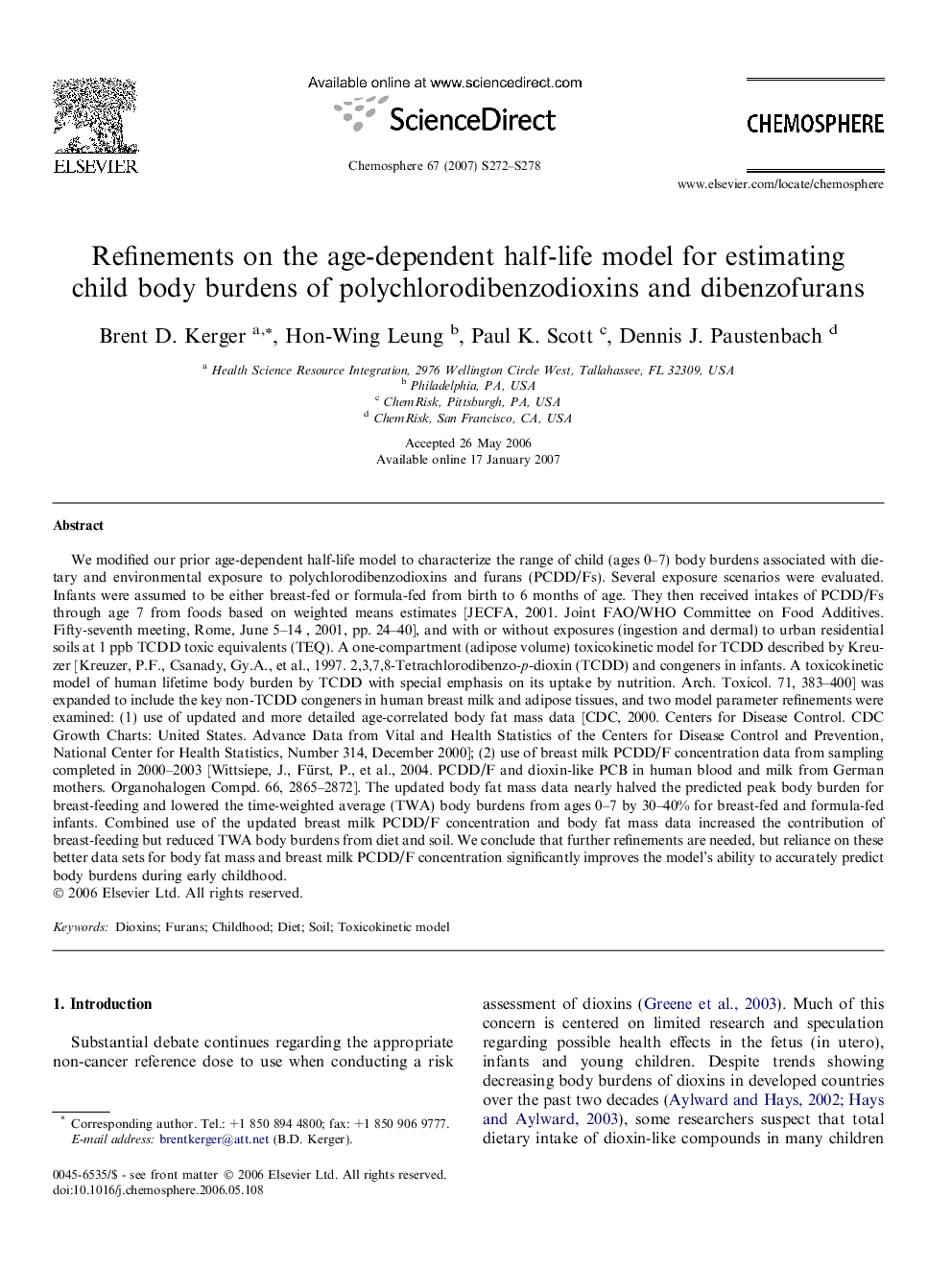| کد مقاله | کد نشریه | سال انتشار | مقاله انگلیسی | نسخه تمام متن |
|---|---|---|---|---|
| 4415150 | 1307737 | 2007 | 7 صفحه PDF | دانلود رایگان |

We modified our prior age-dependent half-life model to characterize the range of child (ages 0–7) body burdens associated with dietary and environmental exposure to polychlorodibenzodioxins and furans (PCDD/Fs). Several exposure scenarios were evaluated. Infants were assumed to be either breast-fed or formula-fed from birth to 6 months of age. They then received intakes of PCDD/Fs through age 7 from foods based on weighted means estimates [JECFA, 2001. Joint FAO/WHO Committee on Food Additives. Fifty-seventh meeting, Rome, June 5–14 , 2001, pp. 24–40], and with or without exposures (ingestion and dermal) to urban residential soils at 1 ppb TCDD toxic equivalents (TEQ). A one-compartment (adipose volume) toxicokinetic model for TCDD described by Kreuzer [Kreuzer, P.F., Csanady, Gy.A., et al., 1997. 2,3,7,8-Tetrachlorodibenzo-p-dioxin (TCDD) and congeners in infants. A toxicokinetic model of human lifetime body burden by TCDD with special emphasis on its uptake by nutrition. Arch. Toxicol. 71, 383–400] was expanded to include the key non-TCDD congeners in human breast milk and adipose tissues, and two model parameter refinements were examined: (1) use of updated and more detailed age-correlated body fat mass data [CDC, 2000. Centers for Disease Control. CDC Growth Charts: United States. Advance Data from Vital and Health Statistics of the Centers for Disease Control and Prevention, National Center for Health Statistics, Number 314, December 2000]; (2) use of breast milk PCDD/F concentration data from sampling completed in 2000–2003 [Wittsiepe, J., Fürst, P., et al., 2004. PCDD/F and dioxin-like PCB in human blood and milk from German mothers. Organohalogen Compd. 66, 2865–2872]. The updated body fat mass data nearly halved the predicted peak body burden for breast-feeding and lowered the time-weighted average (TWA) body burdens from ages 0–7 by 30–40% for breast-fed and formula-fed infants. Combined use of the updated breast milk PCDD/F concentration and body fat mass data increased the contribution of breast-feeding but reduced TWA body burdens from diet and soil. We conclude that further refinements are needed, but reliance on these better data sets for body fat mass and breast milk PCDD/F concentration significantly improves the model’s ability to accurately predict body burdens during early childhood.
Journal: Chemosphere - Volume 67, Issue 9, April 2007, Pages S272–S278